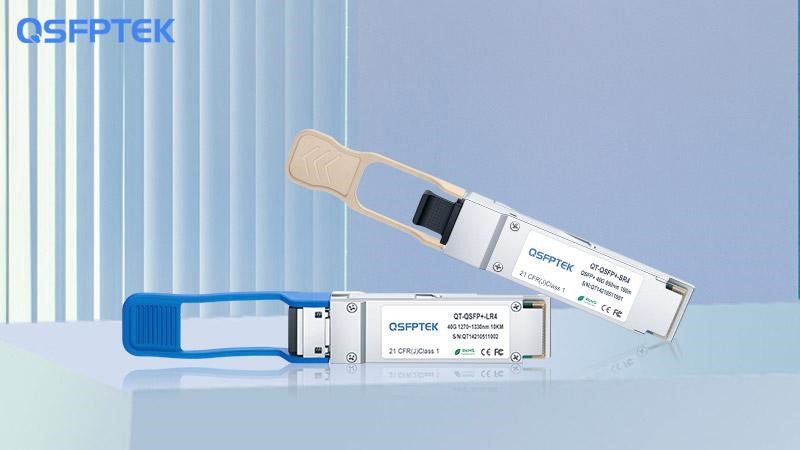If you’re looking for a new network switch, you may have come across CFP and QSFP+ ports. But what’s the difference? In this blog post, we’ll break it down for you. CFP stands for Compact Form Factor Pluggable, while QSFP+ stands for Quad Small Form-Factor Pluggable Plus. In this blog post, we will discuss the differences between CFP and QSFP+, as well as when each type should be used.
What is CFP?
CFP (C form-factor pluggable) is an optical module transmission protocol developed by the CFP MSA organization for high-speed digital signal transmission. The protocol primarily serves 100G Ethernet initially, but can also be used in 40G networks.
There are three main types of 40G CFP optical modules: 40GBASE-SR4 CFP optical module, with multi-mode OM4 jumper with MTP interface, the data can be transmitted 150 meters; 40GBASE-FR CFP optical module, a single-mode jumper with duplex SC interface The transmission distance is 2 kilometers when used together with the cable; the transmission distance of 40GBASE-LR4 CFP optical module can reach 10 kilometers.
What is QSFP+?
The 40G QSFP+ optical module is a four-channel small pluggable optical module with a transmission rate of 40Gbps, which can realize the interconnection between network equipment (such as switches, routers, media converters, etc.) and optical cables or copper cables. CFP optical modules are more compact and therefore more suitable for applications with high port density.
Comparison of 40G QSFP+ Optical Module and 40G CFP Optical Module
The main differences between QSFP+ optical modules and CFP optical modules are reflected in the following aspects:
- Appearance: CFP optical modules are obviously larger (the price is generally higher);
- Interface type: CFP optical module adopts MTP or duplex SC interface, while QSFP+ optical module adopts MTP or duplex LC interface;
- Module type: The types of CFP optical modules are limited, while the QSFP+ optical modules, in addition to the nine common modules introduced in this article, also have other models that support different transmission distances to meet the needs of different users.
QSFP+ optical modules combine the characteristics of small size, low cost, high flexibility, and wide applicability. Compared with CFP optical modules, they are more favored by users.
In conclusion:
Studies have shown that the optical transmission bandwidth in the field of communication networks urgently needs to be upgraded from the original 10G to 40G or even 100G. 40G QSFP+ optical module, typically types including QSFP 40G SR4 and QSFP 40G LR4, can realize 40G data transmission with high density, low cost, and low power consumption, and has a good development prospect.
Before choosing the most suitable optical module for your data equipment, it is very important to understand the types, main models, and application scenarios of 40G optical modules. I hope that the introduction of this article can help you better understand these two types of 40G optical modules, 40G QSFP+, and 40G CFP.
Visit for More Best Articles





